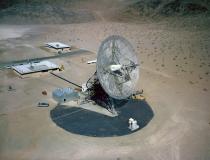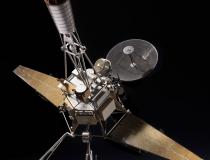During the Cold War, the United States competed with the Soviet Union to reach the Moon. Both nations began by sending robotic spacecraft in 1959. Mission planners experimented with celestial navigation and radio transmissions to determine spacecraft locations in space. The early missions missed their target because precision paths were difficult to achieve. The first U.S. spacecraft to escape Earth’s gravity and get near the Moon was Pioneer 4. It worked with the new tracking antennae at Goldstone, California, which was the first of several antennas that make up the Deep Space Network.
In the early 1960s, Ranger spacecraft were designed to land on the surface of the Moon. After some initial failures, Rangers 7, 8, and 9 impacted the lunar surface. In 1968 humans orbited the Moon. To accomplish this, engineers had to think about navigating in a different environment—space.










